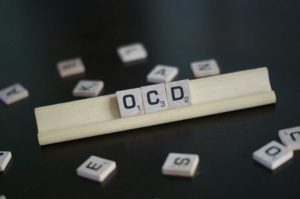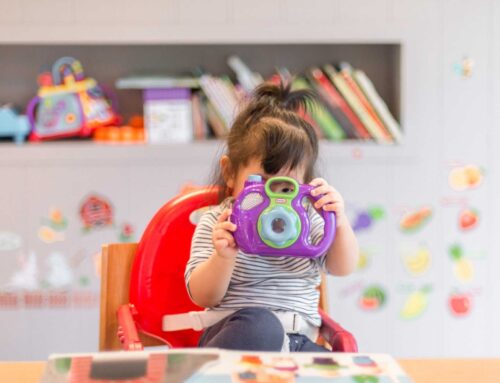When someone hears the term “OCD” images of an obsessively clean person comes to mind. Perhaps someone who has to wash their hands three times after shaking someone’s hand. In reality, true Obsessive Compulsive Disorder (OCD) covers a broader range of conditions and can deteriorate the quality of life for the person living with OCD.
![]() It’s been reported that approximately 1.2% of people in the United States struggle with OCD. No one is immune to OCD. It can be diagnosed in children, teenager, and adults. In fact, studies suggest that more than one million children in the United States have OCD symptoms (OCFMC, 2006).
It’s been reported that approximately 1.2% of people in the United States struggle with OCD. No one is immune to OCD. It can be diagnosed in children, teenager, and adults. In fact, studies suggest that more than one million children in the United States have OCD symptoms (OCFMC, 2006).
According to the Anxiety and Depression Association of America, the average age of onset is 19, with one in four cases occurring by age 14. One-third of affected adults first experienced symptoms in childhood.
If you are parenting a child that displays OCD tendencies, it can be overwhelmingly difficult to witness your child obsessing over rigid rituals and having emotional breakdowns when their habits are disrupted. You are not without hope though. The first thing is to learn as much as you can about what your child’s condition and how to find the right kind of help.
Obsessive Compulsive Disorder Defined
Obsessive Compulsive Disorder is a mental health issue wherein a person is controlled by irrational obsessions and/or compulsions.
Understanding Obsession
It’s important to understand all the components of OCD. Obsessions are intrusive urges, thoughts, or images that are impossible to ignore (American Psychiatric Association, 2013). It’s normal for people to experience unwanted thoughts from time to time, but a person with OCD cannot seem to control or escape their thoughts. Obsessions might include germophobia, perfectionism, constant concern about the safety of a relative, or the fear of inflicting harm on someone. These unconventional thoughts plague a person with OCD.
Understanding Compulsion
Compulsions, on the other hand, are physical or mental rituals that must be repeatedly carried out, often to satisfy an obsession (American Psychiatric Association, 2013). If you have a fear of germs, your obsession might be washing your hands repeatedly or never touching a handle that other people may have come into contact with. Other common types of compulsions include performing specific rituals, counting, washing money, and even praying compulsively.
Popular TV Host Howie Mandel has admitted to a lifelong battle with OCD. He has shared a childhood story where he couldn’t tie his shoes because he knew the laces would be covered in germs.
 A child with OCD will perform certain acts (i.e., compulsions) in order to reduce tension or anxiety (American Psychiatric Association, 2013). It’s a constant battle because the compulsive behaviors are usually done to attempt to eliminate the panic of obsessive thoughts.
A child with OCD will perform certain acts (i.e., compulsions) in order to reduce tension or anxiety (American Psychiatric Association, 2013). It’s a constant battle because the compulsive behaviors are usually done to attempt to eliminate the panic of obsessive thoughts.
The person with OCD behaves in certain ways to find temporary relief from the obsessive thoughts. The momentary relief teaches the individual with OCD to continue carrying out the compulsive behavior whenever they seek relief.
Sometimes there seems to be a direct connection between obsessions and compulsions, such as the fear of contamination and washing one’s hands. Similarly, a child who is afraid of failing a test may check the answers 22 times before turning in the assignment.
Of course, sometimes obsessions and compulsions don’t appear to match. For example, a person may count to 20 to prevent a loved one from being hurt. There are some instances where either obsession or compulsion are present without the other. It is important to remember that the signs don’t have to relate to each other in order to be considered OCD.
OCD is dynamic and can evolve over time. It is not uncommon that under stress both obsessions and compulsions may become more pronounced (American Psychiatric Association, 2013).
As anxiety levels rise, so does the need for relief through compulsive actions. If there’s a season of less stress, symptoms may not be as prominent. If a particular obsession or compulsion is worked through, the obsession or compulsion may simply find a new way to manifest itself.
 OCD is not merely mild frustrations, but constant mental, emotional and even physical stress that’s being placed on a child. One who obsesses about germs may wash his or her hands until they crack or use hot water that creates pain.
OCD is not merely mild frustrations, but constant mental, emotional and even physical stress that’s being placed on a child. One who obsesses about germs may wash his or her hands until they crack or use hot water that creates pain.
Similar to Howie, his refusal to tie his shoes made him a target of bullying. A child that is terrified to touch something in the classroom might be teased by their fellow classmates. A child may refuse to hug friends and family due to potential illness, leaving some people feeling rejected without knowing why. People with OCD often think they are one germ away from a death sentence.
OCD affects the whole family and the entire social network. Shame is often a product of OCD. A child can feel ashamed of his reactions or inability to behave in a way that’s expected of him. OCD can cause such pain that depression is common. Fortunately, there are solutions.
OCD Indicators
OCD isn’t always easy to identify because children might hide their thoughts and actions out of shame. However, here are some signs to look out for that could indicate OCD (OCFMC, 2006; AACAP, 2013):
1. Repetitive behaviors (e.g., touching objects in a certain order, hand washing, anxiously checking and rechecking door locks or school work, repetitive counting, etc.).
2. Habitual and extreme fears (e.g., germs or that a loved one will be harmed).
3. Repetitive comments that might imply superstitious/magical thinking, such as, “If I walk on the cracks in the sidewalk then my mother will come to harm” or “If my prayer isn’t exactly right my team will not win”.
4. Certain habits that begin to intrude on relationships or daily life.
5. The need for frequent reassurance (e.g., “will it be ok if…?”; “will I be ok…?”).
6. The driving need to perform an action until it feels “correct”.
7. Repeatedly confessing bad thoughts, such as sexual imagery or negative opinions of others.
8. Increasing avoidance of various activities.
9. Frequently tardiness or slowness (due to time consumed by obsessions and/or compulsions).
10. Increased physical anxiety symptoms, like headaches and stomach aches.
What Brings on Obsessive Compulsive Disorder?
The cause of OCD can’t be completely identified. Most believe it is the result of some combination of environmental and biological factors. Those with an immediate family member who has OCD will be more likely to acquire OCD than those who don’t. Other factors that have been linked to the development of OCD include divorce, abuse, the death of a loved one, school change, or relocating.
Brain scans have shown a difference in brain activity between those with OCD and people without OCD. A medical evaluation is often warranted because there might be physical causes for the disease.
For example, Pediatric Autoimmune Neuropsychiatric Disorders Associated with Streptococcal (PANDAS) can quickly bring on a severe case of OCD or tic disorder symptoms (National Institute of Mental Health, 2016). The infection will, therefore, require medical treatment.
Helping a Child with OCD
There are many ways to support a child who has OCD.
- Take the time to find a counselor that can offer additional support to you and your child with OCD. There is strength in numbers.
- Refrain from offering reassurance as this does not teach your child how to combat OCD symptoms.
- Do not start avoiding certain places or things because this avoidance will reinforce the symptoms.
- Take the time to teach your child coping skills, such as relaxation techniques, participating in soothing activities, learning helpful bible verses. Managing stress levels is critical.
- Explain the importance of healthy boundaries and the proper ways to set those up. Healthy boundaries is another way a child can manage situations that cause extreme anxiety.
- Promote good nutrition and adequate amount of sleep
- Show your child how to recognize obsessions and compulsions.
- Never shame your child. OCD symptoms might be irrational to outsiders, but to the child they are real. Your child is not to blame for these behaviors.
- Create a safe environment for your child to express and process feelings and thoughts that go along with OCD symptoms. Lend a listening ear.
- Remember to take care of yourself. It can be a heavy burden to bear even for family and friends. Taking care of yourself makes you better able to support your child.
Treatment for OCD in Children
 Treatment is available for people who are battling OCD. If your child hasn’t been diagnosed, it’s important to be evaluated by a mental health professional first to eliminate any other possibilities.
Treatment is available for people who are battling OCD. If your child hasn’t been diagnosed, it’s important to be evaluated by a mental health professional first to eliminate any other possibilities.
There are a few common therapies that a counselor might recommend as treatment for OCD. Cognitive behavioral therapy (CBT) is the most frequently employed treatment method for OCD. Exposure and Response Prevention (ERP) is a type of CBT that can be used to treat the symptoms of OCD. In ERP the child is told not to act on their compulsion to ease their stress.
A counselor will then teach the child the techniques needed to cope with the anxiety since ERP therapy means purposefully exposing the child to anxiety-producing situations. This method might sound harsh, but counselors are trained to go at the child’s pace. Treatment methods are tailored to the child’s situation and age.
A counselor will most likely suggest a medical evaluation to determine whether medication is needed. If your child is currently in school, bringing the administrators on board will be helpful for your child’s success.
Help is only a phone call away. If we can answer any questions for you, or you would like to better understand treatment options, contact a counselor today so that your child can begin the road to healing.
“Orderly”, Courtesy of Rawpixel, Unsplash.com, CC0 License; “OCD”, Courtesy of Airpix, Flickr.com, CC BY 2.0 License; “Venetian Blinds”, Courtesy of Sheila Tostes, Flickr.com, CC BY 2.0 License; “Food in Red”, Courtesy of Fernanda Rodriquez, Unsplash.com, CC0 License
-
Kate Motaung: Curator
Kate Motaung is the Senior Writer, Editor, and Content Manager for a multi-state company. She is the author of several books including Letters to Grief, 101 Prayers for Comfort in Difficult Times, and A Place to Land: A Story of Longing and Belonging...





